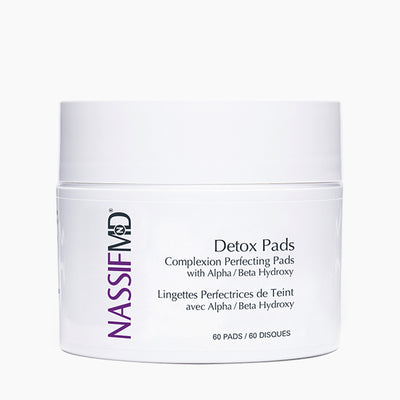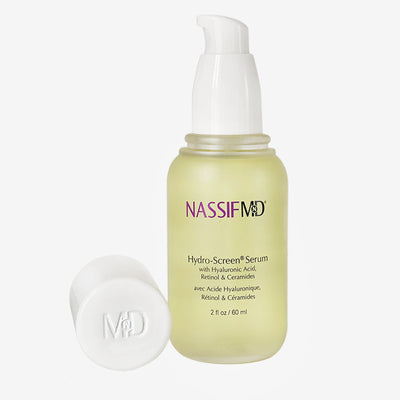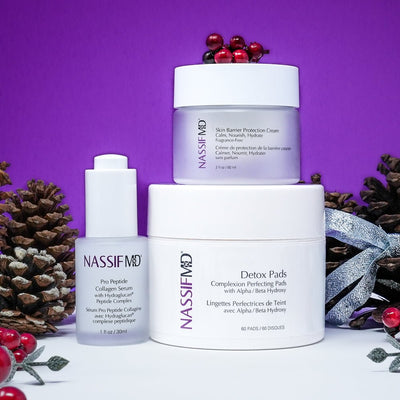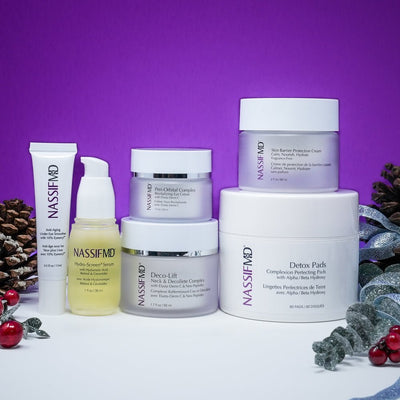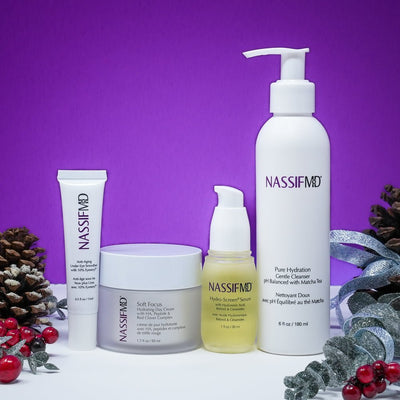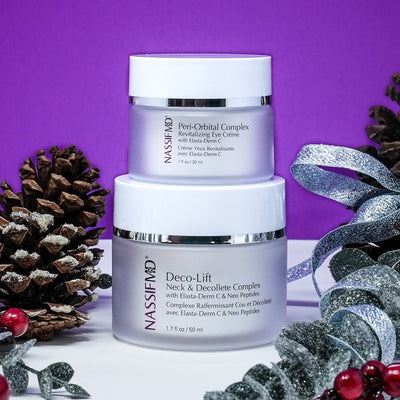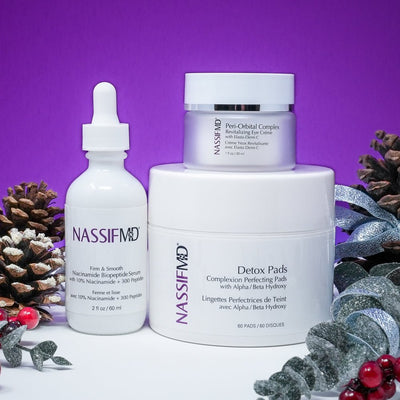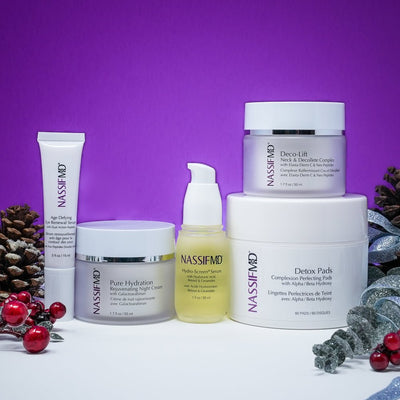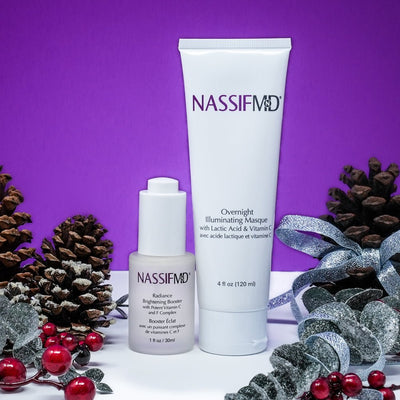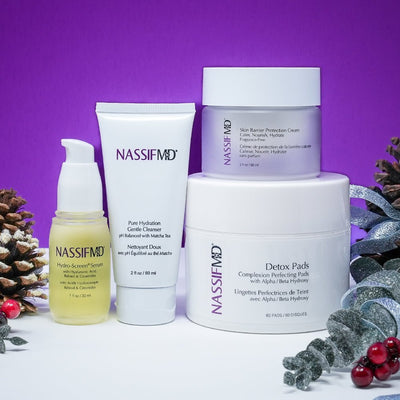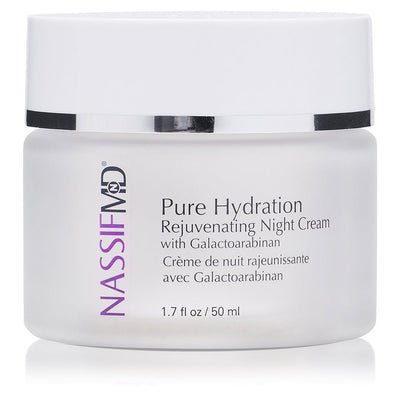Skincare from the Inside Out: The Gut-Skin Connection
So much of the skincare conversation is about what you put on your skin, but topical products work best when your skin is healthy on the inside. Your internal health and nutrition show up on your skin, starting in the gut.
An inflammatory diet and an imbalanced microbiome may lead to inflammation, rashes, acne, and skin aging. On the other hand, a nourishing and anti-inflammatory diet promotes clear, even, and glowing skin. Why? It has to do with the gut health and skin connection.
The good news is that many factors that influence skin health are within your control, like what you eat, your lifestyle, and the products you use.
Today’s article will dive into how to nourish your skin from the inside out to compliment your topical skincare routine. But first, let’s walk through the layers of the skin and the skin-gut connection. Keep reading for a facial and reconstructive surgeon’s perspective on:
- Skin structure – anatomy of skin
- The three layers of skin
- The microbiome and gut-skin axis
- How to improve skin health through diet and how to detox your skin
- How to use NassifMDâ Skin Barrier Balm to maintain skin structure and function
Ready to learn about skincare from the inside out? Let’s go!
Skin: The Body’s Largest Organ
The skin is the body’s largest organ and accounts for about 15% of your body weight. The large surface area of the skin allows for many essential functions, including providing a protective barrier between your body and the environment.
Well-nourished skin provides the following functions:
- Skin barrier protection against pathogens, UV light, injury, and more
- Temperature regulation
- Hydration
- Detoxification
- Sense of touch, temperature, pain, and other sensations
- Immune system regulation
- Vitamin D production
- And more!
Anatomy of the Skin
The three layers of the skin include skin cells and tissues. The top external layer of the skin is the epidermis. The middle layer is called the dermis, and the deepest skin layer is called the hypodermis or subcutaneous tissue. Let’s take a closer look at each layer.
Epidermis
The epidermis is the outermost layer of the skin, which is only four to five cells thick but plays a critical role in barrier function. It contains antioxidants to protect against free radicals. The epidermis is the first to encounter air pollution, toxins, and UV light.
The epidermis contains keratin protein that gives skin its water-resistant property and melanin that determines skin pigmentation.
Cells that make up the epidermis are constantly regenerating. You can remove dead cells with gentle exfoliants.
Dermis
The dermis is the middle layer and the thickest layer of skin, made of two layers of connective tissue. This layer of skin contains nerves, blood vessels, hair follicles, and sweat glands. It’s where you’ll find collagen and elastin that gives the skin its structure and elasticity.
As you age, the structure of the dermis breaks down, contributing to fine lines, wrinkles, and loss of hydration.
Hypodermis
The hypodermis is the innermost skin layer, composed primarily of fat and connective tissue. It connects the dermis to the underlying fascia, providing softness and warmth to the skin.
The Gut Health and Skin Connection
Now that we’ve covered skin anatomy let’s look at how the skin and the gut are similar. If you think about it, what’s inside the gut is outside the body. The tube that composes the gastrointestinal system, like the skin, provides a barrier between the body and the outside world. Both offer the first line of protection from pathogens. Both have an epithelial layer with a high turnover rate and are an integral part of the immune system.
The microbiome is another connection between the gut and the skin. The microbiome includes all the microorganisms that live in and on the body (bacteria, viruses, fungi, protozoa) and their genetic material.
We have a symbiotic, mutually beneficial relationship with our microbiome. The microorganisms get a cozy place to live, and we get nutrients, immunity, and protection from them.
The gut microbiome and skin microbiome are connected. While most of the microbiome lives in the digestive system, mainly the colon, microbes als live on the epidermis. The gut microbiome influences the skin microbiome, and both play a role in skin health, appearance, and disease.
The skin-gut axis explains all these connections between the gut and skin.
What is the Gut-Skin Axis?
The gut-skin axis explains the bidirectional communication between the gut and skin and how each one influences the other. A central regulator of the gut-skin axis is the microbiome.
When there is an imbalance or pathogen affecting the gut microbiome (called dysbiosis), it’s an underlying factor in skin disease. Dysbiosis is associated with:
- Atopic dermatitis
- Psoriasis
- Acne vulgaris
- Dandruff
- Impaired wound healing
- Alopecia
- Rosacea
- Skin cancer
How to Improve Skin Health through Diet
One of the fastest ways to improve your microbiome health and positively influence the gut-brain axis is your diet.
What’s aging you on the inside, including inflammation, is aging you on the outside. Population studies suggest that those with healthier dietary patterns show slower signs of skin aging, with fewer fine lines, wrinkles, dryness, and pigment changes on the face.
Several dietary principles help create a robust, balanced, and healthy microbiome, influencing skin health from the inside out. These include:
- Eat whole foods. Whole foods are foods in their whole, unprocessed, or very minimally processed state. Whole foods are nutrient-dense and provide the nutrients you skin needs.
- Include more plants. Plant foods are rich in nutrients and phytochemicals (plant chemicals), including many that act as antioxidants that accumulate in the skin and provide protection. Plant foods also contain fiber, which supports a healthy GI tract and microbiome.
- Include fermented foods. Fermented foods are a natural source of beneficial bacteria called probiotics that populate the GI tract, crowd out pathogens, and produce many beneficial nutrients for the body and the skin. Fermented foods include:
- Sauerkraut
- Kimchi
- Yogurt,
- Kefir
- Miso
- Kombucha
- Apple cider vinegar
- Tempeh
- Include prebiotics. Prebiotics are food sources for the beneficial probiotic bacterial living in the gut and elsewhere in the body. Prebiotics are found in plant foods and include polyphenols and certain types of fiber. Good food sources are:
- Asparagus
- Artichokes
- Dandelion greens
- Banana and green banana
- Berries
- Cacao
- Flax seeds
- Onions
- Garlic
- Chicory root
- Burdock root
- Jerusalem artichokes (sunchokes)
- Steel cut oats
When you begin adding these foods to your diet, they will naturally displace more processed foods. You may experience a natural skin detox as your body adjusts to the changes occurring in your microbiome.
Since one of the roles of the skin is detoxification, as you change your diet and detox the skin, you may notice skin symptoms like acne and inflammation are worse, but this is likely temporary. Over time with dietary change, you’ll reduce the look of pores and notice a more even skin texture, among other visible benefits.
Benefits of an Anti-Inflammatory Diet
The above strategies are foundational for improving microbiome and skin health and contribute to an anti-inflammatory eating pattern.
Inflammation is a natural immune process designed to heal an injury. If you cut your finger, you’ll experience pain, redness, heat, and swelling as the immune system repairs and protects. However, low-grade chronic inflammation is common in our culture and largely driven by diet.
An anti-inflammatory diet uses food as medicine to decrease systemic inflammation, which is good for your health, longevity, and skin. One of the best benefits of anti-inflammatory diet is clearing up skin inflammation. After all, inflammation in the body can show up as an inflammatory skin condition like eczema or rosacea.
A Mediterranean diet is the gold standard of anti-inflammatory diets and is composed of fresh food, seafood, olive oil, and an abundance of seasonal plant foods (fruits, vegetables, legumes, herbs, spices, and whole grains). It is a whole-food way of eating that you can personalize to your needs.
Turmeric is a traditional spice with roots in India and known for its powerful anti-inflammatory actions throughout the body. Add turmeric to veggies, salad dressings, marinades, and smoothies. You can also take turmeric as a supplement. NassifMD® Immunity Booster contains curcumin, the active constituent of turmeric in a synergistic formula to reduce inflammation, protect against UV damage and free radicals, and promote radiant, healthy skin from the inside out.
In addition to what you add into the diet, consider individual food sensitivities. When you eat food that you are sensitive to, it drives inflammation that may show up on the skin. Consider refined sugar, dairy products, and gluten as possible contributors to skin conditions. These foods tend to be lower with an anti-inflammatory eating plan.
Inside Out + Outside In
An anti-inflammatory diet and microbiome support help to strengthen the skin layers and maintain a healthy skin barrier. While working on this inside-out approach, consider adding topical treatments for additional benefits, including to the skin microbiome.
NassifMD® Skin Barrier Balm is formulated by a facial plastic and reconstructive surgeon who understands the skin layers and how to promote skin healing after surgery or a medical spa treatment. However, this formula is available to you for daily use to quickly hydrate the skin and enhance barrier function.
NassifMDâ Skin Barrier Balm contains
- Centella asiatica, a plant extract rich in antioxidants. It reduces inflammation, moisturizes, and restores the skin barrier.
- Ophiopogon japonicus root, a plant extract rich in hydrating polysaccharides to moisturize the skin. Note: these polysaccharides are also a food source for beneficial bacteria.
- B vitamins, including niacinamide (vitamin B3) and panthenol (vitamin B5), to strengthen skin while supporting skin regeneration and metabolism.
- Sunflower seed oil, a rich natural source of vitamin E for potent antioxidant protection.
The synergy of these ingredients in this formula prevents water loss through the skin barrier to reduce fine lines, wrinkles, irritation, and redness, while promoting softer, smoother skin.
We recommend using NassifMD® Skin Barrier Balm twice daily after cleansing and serums, along with an anti-inflammatory diet and turmeric, for the best results.
References:
- Kanitakis J. (2002). Anatomy, histology and immunohistochemistry of normal human skin.European journal of dermatology : EJD, 12(4), 390–401.
- Lopez-Ojeda, W., Pandey , A., Alhajj, M., & Oakley, A. M. (2022). Anatomy, Skin (Integument). InStatPearls. StatPearls Publishing.
- Course Hero. The integumentary System – Structure and Function of Skin. Accessed 2/14/23.
- De Pessemier, B., Grine, L., Debaere, M., Maes, A., Paetzold, B., & Callewaert, C. (2021). Gut-Skin Axis: Current Knowledge of the Interrelationship between Microbial Dysbiosis and Skin Conditions.Microorganisms, 9(2), 353.
- Salem, I., Ramser, A., Isham, N., & Ghannoum, M. A. (2018). The Gut Microbiome as a Major Regulator of the Gut-Skin Axis.Frontiers in microbiology, 9, 1459.
- Katta, R., Sanchez, A., & Tantry, E. (2020). An Anti-Wrinkle Diet: Nutritional Strategies to Combat Oxidation, Inflammation and Glycation.Skin therapy letter, 25(2), 3–7.
- Peluzio, M. D. C. G., Dias, M. M. E., Martinez, J. A., & Milagro, F. I. (2021). Kefir and Intestinal Microbiota Modulation: Implications in Human Health.Frontiers in nutrition, 8, 638740.
- Tosti, V., Bertozzi, B., & Fontana, L. (2018). Health Benefits of the Mediterranean Diet: Metabolic and Molecular Mechanisms.The journals of gerontology. Series A, Biological sciences and medical sciences, 73(3), 318–326.
- Sun, B., Wu, L., Wu, Y., Zhang, C., Qin, L., Hayashi, M., Kudo, M., Gao, M., & Liu, T. (2020). Therapeutic Potential of Centella asiaticaand Its Triterpenes: A Review. Frontiers in pharmacology, 11, 568032.
- Wang, H. Y., Guo, S. C., Peng, Z. T., Wang, C., Duan, R., Dong, T. T. X., & Tsim, K. W. K. (2019).Ophiopogon Polysaccharide Promotes the In Vitro Metabolism of Ophiopogonins by Human Gut Microbiota. Molecules (Basel, Switzerland), 24(16), 2886.


